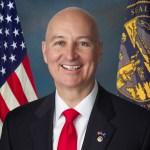For decades, colleges and universities were allowed to discriminate on the basis of race alone against applicants in the admissions processes. On January 29, the Supreme Court of the United States ruled against this practice of affirmative action in students for fair admissions versus Harvard, and in doing so overturned one of our country’s last vestiges of legal racial discrimination.
Contrary to what some critics have said, the court’s decision to reject affirmative action does not herald the return to the racist era of our country’s past. Rather, it is the continuation of our country’s long and successful struggle against racial discrimination and in favor of equal rights for all. In the courts majority opinion, Chief Justice John Roberts quoted the words of another great Supreme Court Justice John Marshall Harlan in 1896. Justice Harlan was the lone dissenter against the court’s mistaken decision in Plessy versus Ferguson, which protected racial segregation. In his dissent, Justice Harlan wrote in the view of the Constitution, in the eye of the law, there is in this country, no superior, dominant ruling class of citizens. There is no caste here. Our Constitution is colorblind, and neither knows nor tolerates classes among citizens.
I grew up with Justice Harlands dissent ringing in my ears. It was the clarion call of the Justice Department’s Civil Rights Division in the Kennedy administration, under Assistant Attorney General Burke Marshall. It was the spirit of the legal struggle for civil rights. The Civil Rights divisions mission was to enforce federal civil rights law and guarantee that African Americans in the South enjoyed equal rights as American citizens and the divisions lawyers, including my father, John Doerr, fought some of the most decisive legal battles to secure civil rights, from voting cases to the integration of universities. This spirit of the Civil Rights Division and the case for equal rights drew on many sources in addition to justice Harlands dissent. Of course, there are the principles expressed in the Declaration of Independence, that all men are created equal and endowed by their Creator with certain unalienable rights. More recent was the Supreme Court’s 1954 ruling in Brown versus Board of Education that struck down racial segregation in public schools. This decision had been based on the 14th Amendment to the US Constitution, which guarantees all citizens equal protection before the law.
When concurring with Justice Roberts his decision in the affirmative action case, Associate Justice Clarence Thomas highlighted the 14th Amendment, as well as the 13th amendment that abolished slavery. He wrote, the history of these measures enactment, renders their motivating principle as clear as they’re taxed. All citizens of the United States, regardless of skin color, are equal before the law.
Equality before the law was also the motivating principle of the civil rights movement, and its campaign of nonviolent resistance and peaceful protest against racial discrimination in the southern United States. It was the spirit of the leaders who organized the 1963 march on Washington, and countless other demonstrations. And it was the message that Dr. Martin Luther King Jr. Delivered from the steps of the Lincoln Memorial on August 28 1963. Dr. King told us then, that his goal was that his children will one day live in a nation where they will not be judged by the color of their skin, but by the content of their character.
Our country has made great strides toward fulfilling Dr. King’s dream. With the Civil Rights Act of 1964. And the Voting Rights Act of 1965. The federal government put an end to the days of legal segregation, and took decisive action to ensure African Americans right to vote, the spirit of justice Harlands dissent, and our founding documents became the law of the land in most areas of American life, but in one area, we got away from that spirit. In the years since the civil rights movement. We witnessed the rise of college admissions policies that put skin color over character and ability. These policies clearly put some citizens before others. Even so the Supreme Court protected them as recently as 2003. Asian Americans, including the plaintiffs in the Harvard case, were treated most unjustly by these policies. The court found they were discriminated against and overturned affirmative action
on the same grounds as the great cases of the civil rights movement.
Now we can add Justice Roberts decision, and justice Thomas’s concurrence to the canon of great defenses of equal protection, regardless of race. These documents are consistent with the spirit of the Declaration of Independence, the 14th Amendment, just as Harlands dissent, Brown versus Board of Education, the Civil Rights Act and the Voting Rights Act, and Dr. King’s dream. With the Court’s recent decision, we’ve gotten back to our founding principles
Related

















Robert Doar
President, American Enterprise Institute
View Video LibraryCommentary
Our commentary partners will help you reach your own conclusions on complex topics.
How could RFK Jr. impact 2024 election?
Yesterday
Peter Zeihan
Global warming won’t impact Russian-Chinese shipping
Thursday
Peter Zeihan
Can other nations replicate success of US shale revolution?
Wednesday
Peter Zeihan
Peace between Israel and Iran, at least for now
Tuesday
Peter Zeihan
Affirmative action ruling consistent with struggle against US racist past
Aug 03, 2023
By Straight Arrow News
When the Supreme Court struck down affirmative action programs at the University of North Carolina and Harvard, conservatives celebrated the decision, hailing it as a victory for a “colorblind” interpretation of the Constitution. Former President Donald Trump praised the ruling as a “great day for America.” Democrats, on the other hand, criticized the decision, arguing that affirmative action is essential in addressing historical race discrimination.
Straight Arrow News contributor Robert Doar argues the Left has it wrong and believes the ruling against affirmative action is consistent with America’s ongoing efforts to rectify its discriminatory past.
In the years since the Civil Rights Movement, we witnessed the rise of college admissions policies that put skin color over character and ability. These policies clearly put some citizens before others. Even so, the Supreme Court protected them as recently as 2003. Asian Americans, including the plaintiffs in the Harvard case, were treated most unjustly by these policies. The court found they were discriminated against and overturned affirmative action on the same grounds as the great cases of the Civil Rights Movement.
Now we can add Justice Roberts’ decision, and Justice Thomas‘ concurrence to the canon of great defenses of equal protection, regardless of race. These documents are consistent with the spirit of the Declaration of Independence, the 14th Amendment, Justice Harlan’s dissent, Brown v. Board of Education, the Civil Rights Act and the Voting Rights Act, and Dr. King’s dream. With the Court’s recent decision, we’ve gotten back to our founding principles.
For decades, colleges and universities were allowed to discriminate on the basis of race alone against applicants in the admissions processes. On January 29, the Supreme Court of the United States ruled against this practice of affirmative action in students for fair admissions versus Harvard, and in doing so overturned one of our country’s last vestiges of legal racial discrimination.
Contrary to what some critics have said, the court’s decision to reject affirmative action does not herald the return to the racist era of our country’s past. Rather, it is the continuation of our country’s long and successful struggle against racial discrimination and in favor of equal rights for all. In the courts majority opinion, Chief Justice John Roberts quoted the words of another great Supreme Court Justice John Marshall Harlan in 1896. Justice Harlan was the lone dissenter against the court’s mistaken decision in Plessy versus Ferguson, which protected racial segregation. In his dissent, Justice Harlan wrote in the view of the Constitution, in the eye of the law, there is in this country, no superior, dominant ruling class of citizens. There is no caste here. Our Constitution is colorblind, and neither knows nor tolerates classes among citizens.
I grew up with Justice Harlands dissent ringing in my ears. It was the clarion call of the Justice Department’s Civil Rights Division in the Kennedy administration, under Assistant Attorney General Burke Marshall. It was the spirit of the legal struggle for civil rights. The Civil Rights divisions mission was to enforce federal civil rights law and guarantee that African Americans in the South enjoyed equal rights as American citizens and the divisions lawyers, including my father, John Doerr, fought some of the most decisive legal battles to secure civil rights, from voting cases to the integration of universities. This spirit of the Civil Rights Division and the case for equal rights drew on many sources in addition to justice Harlands dissent. Of course, there are the principles expressed in the Declaration of Independence, that all men are created equal and endowed by their Creator with certain unalienable rights. More recent was the Supreme Court’s 1954 ruling in Brown versus Board of Education that struck down racial segregation in public schools. This decision had been based on the 14th Amendment to the US Constitution, which guarantees all citizens equal protection before the law.
When concurring with Justice Roberts his decision in the affirmative action case, Associate Justice Clarence Thomas highlighted the 14th Amendment, as well as the 13th amendment that abolished slavery. He wrote, the history of these measures enactment, renders their motivating principle as clear as they’re taxed. All citizens of the United States, regardless of skin color, are equal before the law.
Equality before the law was also the motivating principle of the civil rights movement, and its campaign of nonviolent resistance and peaceful protest against racial discrimination in the southern United States. It was the spirit of the leaders who organized the 1963 march on Washington, and countless other demonstrations. And it was the message that Dr. Martin Luther King Jr. Delivered from the steps of the Lincoln Memorial on August 28 1963. Dr. King told us then, that his goal was that his children will one day live in a nation where they will not be judged by the color of their skin, but by the content of their character.
Our country has made great strides toward fulfilling Dr. King’s dream. With the Civil Rights Act of 1964. And the Voting Rights Act of 1965. The federal government put an end to the days of legal segregation, and took decisive action to ensure African Americans right to vote, the spirit of justice Harlands dissent, and our founding documents became the law of the land in most areas of American life, but in one area, we got away from that spirit. In the years since the civil rights movement. We witnessed the rise of college admissions policies that put skin color over character and ability. These policies clearly put some citizens before others. Even so the Supreme Court protected them as recently as 2003. Asian Americans, including the plaintiffs in the Harvard case, were treated most unjustly by these policies. The court found they were discriminated against and overturned affirmative action
on the same grounds as the great cases of the civil rights movement.
Now we can add Justice Roberts decision, and justice Thomas’s concurrence to the canon of great defenses of equal protection, regardless of race. These documents are consistent with the spirit of the Declaration of Independence, the 14th Amendment, just as Harlands dissent, Brown versus Board of Education, the Civil Rights Act and the Voting Rights Act, and Dr. King’s dream. With the Court’s recent decision, we’ve gotten back to our founding principles
Related
Affirmative action ruling consistent with struggle against US racist past
When the Supreme Court struck down affirmative action programs at the University of North Carolina and Harvard, conservatives celebrated the decision, hailing it as a victory for a “colorblind” interpretation of the Constitution. Former President Donald Trump praised the ruling as a “great day for America.” Democrats, on the other hand, criticized the decision, arguing…
Aug 3
End of pandemic SNAP benefits a chance to improve food program
Millions of struggling American families in 32 states are now receiving less federal aid to buy food as the emergency funding for the SNAP food stamps program has expired. The emergency allotment, spurred by the COVID-19 outbreak, boosted the money that recipients received by at least $95 per month from SNAP, which stands for “supplemental…
Mar 9
Census data paints an inaccurate picture of inequality in America
The U.S. Census Bureau is a nonpartisan government agency, responsible for not only determining how many representatives each state will have in Congress for the next 10 years, but also for collecting income data. By asking about income, the Bureau’s intent is to “help communities enroll eligible families in programs designed to assist them.” But…
Sep 22
Elites have lost the trust and confidence of Americans
The Cambridge Dictionary defines the liberal elite as “a group of people with education, money, and other advantages, often living in cities, who have liberal political views and are seen as not understanding the problems and views of ordinary people.” Former President Donald Trump’s war on elites was central to his 2016 campaign and could be weaponized again should he run in 2024. Straight Arrow News…
Aug 5
American men need to start taking more personal responsibility
Some members of the Republican party, such as former President Donald Trump and Sen. Josh Hawley (R-MO), blame Democrats for starting a war against American men. These voices want government action taken to protect men from policies meant to undermine their roles in society. But is government intervention really the answer? Straight Arrow News contributor Robert…
Jun 23
Underreported stories from each side
Biden’s 13th-Quarter Approval Average Lowest Historically
8 sources | 13% from the left
AP Images
Jamie Raskin Slams Supreme Court Over Trump Immunity Case: ‘Acting Like A Bunch Of Partisan Operatives’
6 sources | 0% from the right
AP Images
Latest Stories
Biden uses NFL draft ad to try to connect with young voters
Watch 2:16
Yesterday
Powering pot: Energy for US cannabis industry could electrify 13.5M homes
Watch 1:29
Yesterday
Allies plan for Trump to have more control over interest rates
Watch 3:07
Yesterday
FDA: Bird flu found in 1/5 commercial milk samples, suggests greater spread
Watch 1:21
Yesterday
China permanently deploys warships to second overseas base
Watch 2:58
Yesterday
Popular Opinions
In addition to the facts, we believe it’s vital to hear perspectives from all sides of the political spectrum.
House Speaker Johnson’s foreign aid bill shows a focused GOP
Yesterday
Star Parker
Trump’s own behavior betrays his guilt
Yesterday
Dr. Rashad Richey
Portraying far-left and far-right as equal in ‘Civil War’ is wrong
Thursday
Jordan Reid
Who will Trump pick for vice presidential running mate?
Thursday
Matthew Continetti